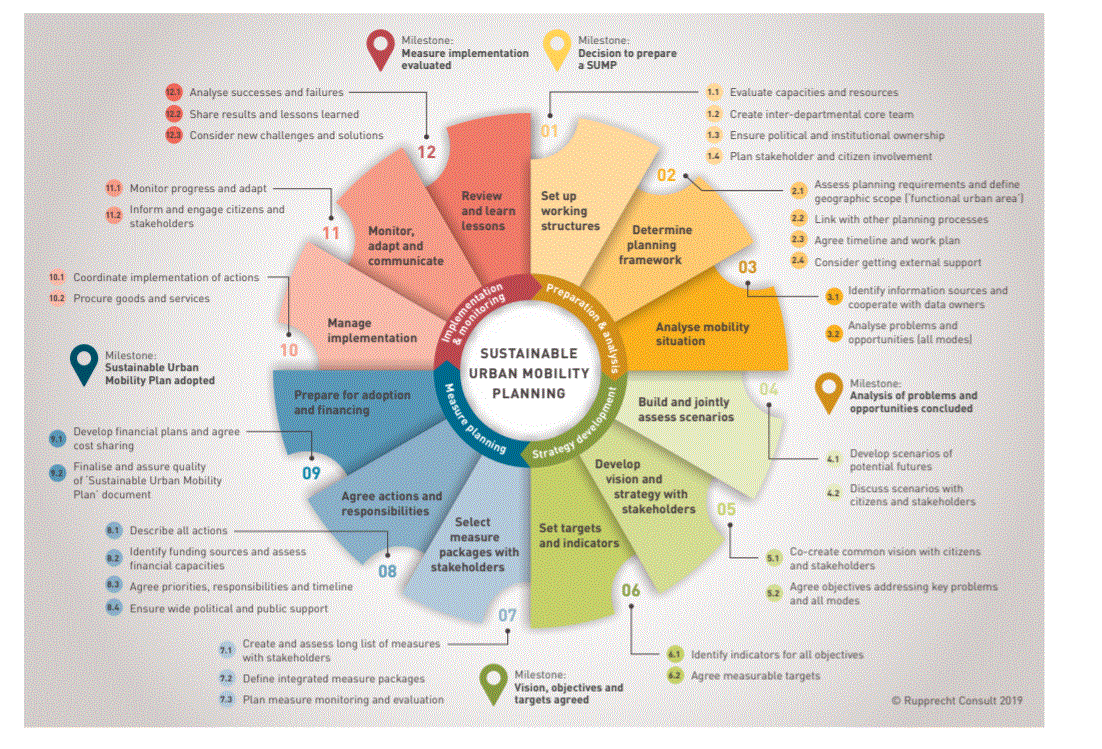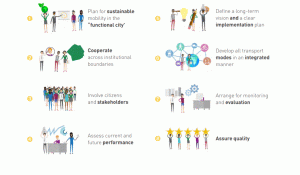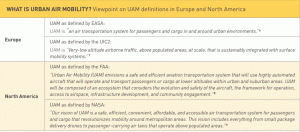
A Practitioner Briefing on Sustainable urban air mobility planning (SUMP and Urban Air Mobility) has been developed by the UIC2, the Urban-Air-Mobility Initiative Cities Community, of the EU’s Smart Cities Marketplace.
The briefing document outlines how UAM can be integrated with current SUMP design and development procedures, examples of different city approaches to UAM adoption, the opportunities and challenges UAM presents to city planners and the principles which should govern development.
“The Briefing introduces the fundamentals on the evolving domain of UAM, then outlines the eight SUMP principles and addresses them within the current UAM context. It also presents the SUMP cycle, by focusing on the phases and sub-steps where the SUMP concept and the UAM domain interrelate in specific and interesting ways. Furthermore, it provides detailed descriptions of examples from UIC2 cities and regions that have been actively engaged in UAM and have contributed to this document. It concludes by drawing conclusions and recommendations for action,” says the study introduction.
The eight SUMP principles in the context of Urban Air Mobility
UAM as defined by the UIC2: is “Very-low altitude airborne traffic, above populated areas, at scale, that is sustainably integrated with surface mobility systems.”
According to the study text:
“UAM comes along with the following promises:
- Drones and eVTOLs (air taxis) can play a vital role in a fully integrated mobility concept and effectively complement other modes of transportation.
- UAM may enable the transition towards a more sustainable modal split in a city or region, or may even, according to more optimistic points of view, substantially reduce traffic densities on the ground, if rolled out on a large scale.
- UAM exhibits considerable prospects of economic growth and a high potential for innovations and innovative business models.
- UAM attracts a qualified workforce to a city or region, fosters start-up ecosystems and incentivises topnotch research.
- UAM could be a sustainable mode of transportation (given that it taps into green sources of energy and its use results in overall energy use reduction).
- Regulatory frameworks like the U-space provide for efficient and safe air traffic, even with the highest traffic densities. “
“The uncertainties pertaining to UAM are, among others:
- The operation of drones and air-taxis on a large scale pose new safety risks to the urban environment, as the impact from the probability of crashes or collisions (even with the highest standards of airworthiness) increases in a densely populated air space. Regulatory frameworks like the U-space are designed to minimise such risks as well as to implement high safety standards in UAM.
- At the time of writing, regular operations of (cargo) drones are rather an exception than the norm, and virtually non-existent in the case of air taxis, Presently, air taxis fly at best for a few seconds without passengers in highly controlled test environments, and many technical issues still need to be resolved. For example, it is by no means certain that the advances in battery technology (especially in terms power density) will suffice to significantly extend the range and flight duration of drones and air taxis.
- Will there be UAM business models that are both viable and profitable? A regulatory framework like the U-space is based on a highly evolved technological infrastructure which will presumably be costly to set up and manage, and costly to be accessed and utilised by UAM service providers. High costs of utilising the urban airspace may imply narrow profit margins for commercial UAM service providers, or, in a worstcase scenario, no profits at all, thus shutting down any commercially viable business model.
- Will ground-based modes of transportation eventually turn out to be safer, cheaper and more efficient than (cargo) drones or air taxis? Basically, a universal answer to this question does not exist; rather the optimal transportation mix may depend on the specific local conditions in a city or region and the collective mobility preferences of the population.
- Which eVTOL design will eventually turn out to be the most effective or the best match for given use cases? The certification of eVTOLs is a long and costly procedure and it is by no means certain that each eVTOL market contender will eventually succeed.
- Which financing models are eventually viable, regarding the whole lifecycle of an eVTOL or a drone? Insurance and liability issues still need to be addressed as well.”
One of the report’s key conclusions is:
“Given the high degree of uncertainty pertaining to the future of UAM, a “wait and see”-approach by a city or region on how the UAM-frontrunner cities and regions perform can therefore be both perfectly legitimate and rational as long as it is accompanied by a regular follow up of the sector, and where applicable, a systematic preparation in acquiring and developing pertinent UAM skills and competences. To this end, local authorities and policy makers shall be equipped to dynamically assess current and future performance of UAM services. For example, UAM is not, as yet, a mature new mode of transportation to be considered in existing or short-term modal split analysis, as shown by early research.”
For more information
https://www.eltis.org/in-brief/news/new-sump-practitioner-briefing-urban-air-mobility



